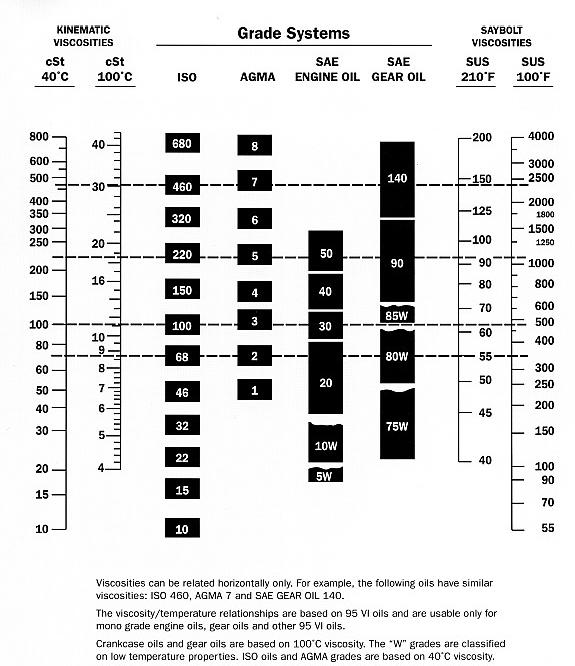G-man, whats so funny?
TomJones, I'm under the impression that German Castrol 0w30 is thicker than some(see GCs synth competitors) 5w30s and 10w30s when hot.
Look at GaryAllans chart and compare to the TallPall's SAE J300 spec:
0w-25w are NOT tested above 100c or at 40c on the spec; Cross out those parts of the chart when comparing motor oils.
SAE 20-60 are not tested below 100c on the SAE spec. Cross out those parts of the chart.
So, how do you compare the "W" with the "non-W" SAE weights. You don't! Because at 100c, the "W" specs have no max.
The mins at 100c are the same for 15w, 20w, & 20.
The mins at 100c are the same for 25w and 30.
SAE J300 explains oil grades. I don't care for the above all inclusive grade chart.
This is better:
http://www.ethyl.com/products/la/handbook/Viscosity.pdf
The bottle numbers are a misnomer. The 1st number (#W) should never be compared to the 2nd number on a multiweight oil. And the 1st number on a multiweight oil should never be compared to the only number on a straight SAE grade.
You can buy almost any multiweight.
And you can buy almost any straight SAE30-SAE60 oil.
But, when was the last time you saw a straight SAE 0w - 25w oil?
Also, it is possible for a SAE30 to flow like a 0w, 5w, 10w, 15w, 20w, or even a 25w oil. It as simple as the oil blender saving money, or not bother testing(or accurately blending) the oil for the multiweight label.
Also, Kickster, the hotter the OIL gets, the thinner its gets(until it sludges up). With an oil cooler and thermostat, my ENGINE can go from cool to very hot with minimal change in oil viscosity.
Read your owners manual for choices. If not happy with them, use the outside weather, location, engine condition, and some common sense when choosing a straight or multiweight oil. A little more info on that VW(year type size hp......) would help in making that choice.
There is NO best unless proven with UOAs.
Good luck in your decision!




